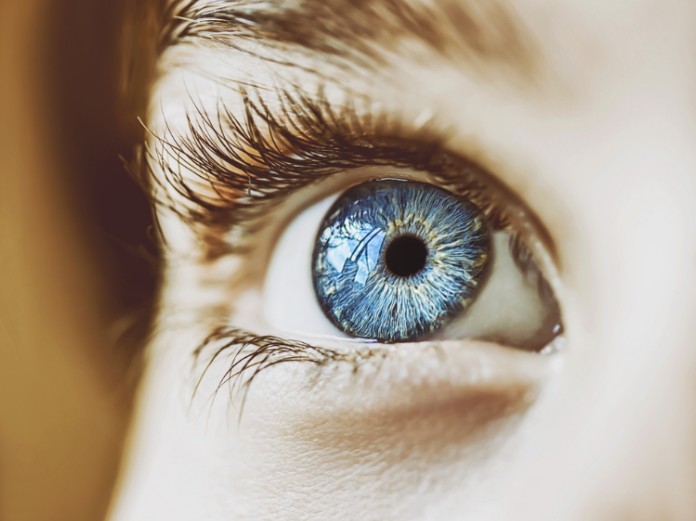"If Hashem Just Performs a Miracle for Me, I Will Believe in Him" – 5 Points to Ponder
Why does a newborn cry at birth? What's special about snowflakes, and what role do eyelashes play? What did Hashem ask the atheist after his passing, and do miracles still occur?
 (Photo: shutterstock)
(Photo: shutterstock)"Just Cry Already!"
This is perhaps the only time in life when parents eagerly await their child's cry. This initial cry signals that "all is well" with the newborn. But the question remains, why must the baby cry?
First, a few words about the fetus's heart, which differs from an adult's: Since the baby's lungs are filled with amniotic fluid and not functioning, the heart bypasses the lungs, sending blood from the placenta through the right side of the heart directly to the left, without passing through the lung vessels.
Let's return to the moment of birth: The baby emerges wet from the amniotic fluid, and exposure to the air cools its skin, triggering a reflex that causes the baby to cry. To cry, the newborn takes a deep breath, followed by exposure to the cold air.
Wait, but how will it breathe? The baby isn't breathing on its own, as its lungs are filled with amniotic fluid and non-functional!
 (Photo: shutterstock)
(Photo: shutterstock)Indeed, the baby's lungs have not yet breathed. They're still full of amniotic fluid, and the newborn is at risk of drowning. But at that crucial moment, the body activates a life-giving action: the adrenal glands secrete adrenaline throughout the body. The muscles essential for breathing – the diaphragm and the intercostal muscles – suddenly contract, and the baby takes its first and most important breath. These processes create pressure changes that increase blood flow to the baby's lungs. Now, every breath will absorb oxygen into the baby's blood vessels.
At the same time, a significant amount of blood from the placenta is pushed – via gravity and uterine contractions – into the baby's heart. This further increases blood flow to the lungs. As a result, the hole between the two sides of the baby's heart closes suddenly, and the lungs become the only place for oxygen exchange.
And what about the amniotic fluid remaining in the lungs, you ask?
Indeed, friends, the baby's cry isn't just to increase blood flow to the newborn's lungs or to change the structure of its heart, which initially functioned as a single unit, into an adult heart with two atria and two separate ventricles. The crying also helps expel the excess amniotic fluid that has filled the lungs until now. A baby who hasn't cried sufficiently may suffer from respiratory distress due to retained amniotic fluid that wasn't expelled or absorbed in time.
It's needless to say that scientists have no answer for who "timed" so miraculously the closure of the fetal vessels and the changes in blood flow in the baby's heart, granting life to the newborn...
Conversation Between an Atheist and Hashem
After his passing, a conversation began between an atheist and Hashem:
Hashem: "Why didn't you believe in me?", the question echoed into the air...
The atheist tried to justify himself, answering: "I didn't believe in you because I didn't see any proof of your existence".
Then the earth shook...
Suddenly, thousands of scenes and images he had seen in his life flashed before the atheist's eyes.
He saw images of the universe, the sky, the solar system, the moon, clouds, the living world: animals (horse, elephant, bee, cat...), humans (man, woman, elder, youth, baby). He saw images of nature: rain, snow, lightning and thunder, mountains and valleys. He saw fruits and vegetables of all kinds and colors. He observed human body organs, such as arteries, veins, heart function, lungs, digestive system, eye structure, brain structure, and functions: emotions, thinking, perception, and memory. The miraculous and incomprehensible process of creating a healthy and complete baby and the development of its organs in the womb, including every individual's growth process.
Suddenly, the atheist understood that the entire universe was composed of parts that fit together like a puzzle with amazing design...
Then Hashem slowly and sadly declared: "Did you really think all these things came into being on their own, without thought and intention? Wasn't the world I created complex and planned enough for you to deduce from it my existence? Could everything I created in my world have come into being by itself, just like that, without thought and without planning?".
The atheist had no answer. Even a child's logic cries out that the world was created with great intention, so much more so an educated adult's wisdom. So how could he deny such a simple truth?
(From the booklet "A Fateful Conversation" – Rabbi Daniel Blass Shlit"a)
Snowflakes
A closer look at snowflakes reveals how beautiful and intricate these frozen deposits are that visit us in the winter. Snowflakes, coming in spectacular geometric shapes with amazing precision and beauty, raise the question – how was this wonder created?
The ice crystals that come together to form snowflakes connect in a symmetrical, attractive, and perfectly complex way. This exemplary precision gives the snowflakes their unique shape. On a snowy day, endless numbers of flakes descend. Of all the snowflakes that have fallen and will fall in the future, there isn't a single one exactly identical to another!
 (Photo: shutterstock)
(Photo: shutterstock)
The human mind cannot grasp and understand the possibility of creating such perfect symmetrical beauty and the fact that this phenomenon repeats itself endlessly, differently each time, creating a different shape each time. However, astonishingly, the Creator didn't stop there, but also decreed to limit the different shapes of the snowflakes to a hexagonal structure – always with six angles!
Snowflakes are more beautiful than the most designed jewelry.Snowflakes reflect something sublime, a masterpiece creation! Is it possible that snowflakes, with their extraordinary symmetry and stunning forms, were created without a guiding, overseeing hand?
We Want to See Miracles!
If the Creator of the world would just perform one small miracle for us, we immediately would strengthen our faith and never fall from it, so we believe. Really?
The truth is that miracles continue to happen, every moment and everywhere, if we only observe. Yet we choose to ignore them and continue in our routines.
To see miracles, we'll need to step out of our routines and fixed ways of thinking, and try to see things objectively, without personal biases. Why aren't we amazed by the rain falling from the sky? By the Earth's precise rotation around itself and the sun? By the growth of a tree laden with fresh and tasty fruit – from a rotten seed? By the precise and wondrous development of the fetus in its mother's womb?
Try to define the concept of "nature." We include all the incomprehensible things in it, things that seemingly happen by themselves. If we truly attempt to define "nature," we'll discover that nature is the sum of all the miracles the Creator performs before our eyes every moment, to which we've become accustomed.
Miracles are completely "clothed" in nature, and aren't recognized as miracles at all. The sages warn: "The recipient of a miracle isn't aware of his miracle." In other words, there are times when a miracle is done for a person, and he's not aware of the miracle done for him. Every day, miracles are done for people, and they don't perceive them, taking them for granted.
Try to forget the routines, release personal bias, and look around. It doesn't take much effort to see great miracles; just open your eyes and see...
"Gatekeepers" of the Eyes
Do we really need eyelashes – those tiny hairs growing on the edges of our eyelids? What would happen if our eyes were without eyelashes?
Eyelashes are fine hairs that grow at the edge of the eyelids, serving as the "gatekeepers" of the eyes.
Our eyes maintain themselves clean and moist thanks to the blinking reflex, activated by receptors in the eyes and eyelashes. When the eyelashes sense contact, or when the eye dries out, the receptors "turn on," and we blink, protecting the eye from debris and injury while moistening its surface.
 (Photo: shutterstock)
(Photo: shutterstock)Eyelashes are very sensitive to touch and serve as a warning system for the presence of an object such as dust or an insect, close to the eye. When a speck of dust approaches, they sense it and send a command to the eyelid to close. The eyes close reflexively when the eyelashes come into contact with other objects.
In fact, without eyelashes, we would suffer from chronic eye infections, irritations, dryness, and even irreversible eye damage. Without eyelashes, we wouldn't be able to drive, walk on the street, or read from a board. We simply wouldn't see anything!

